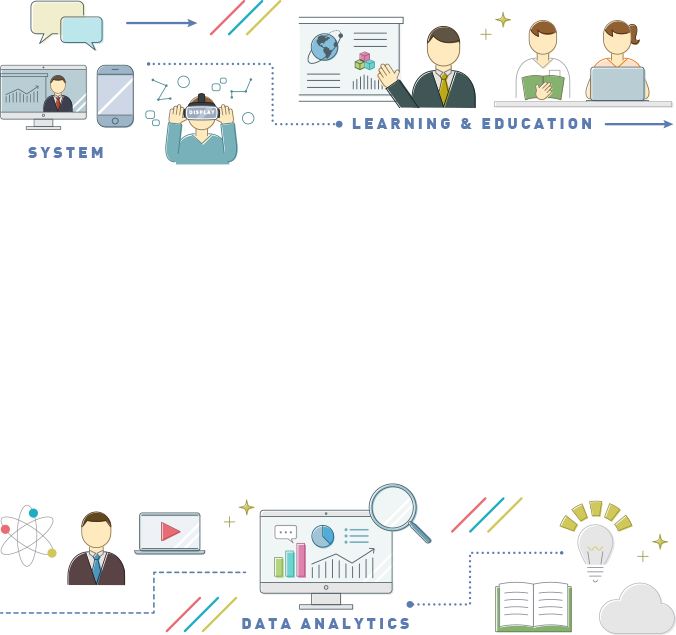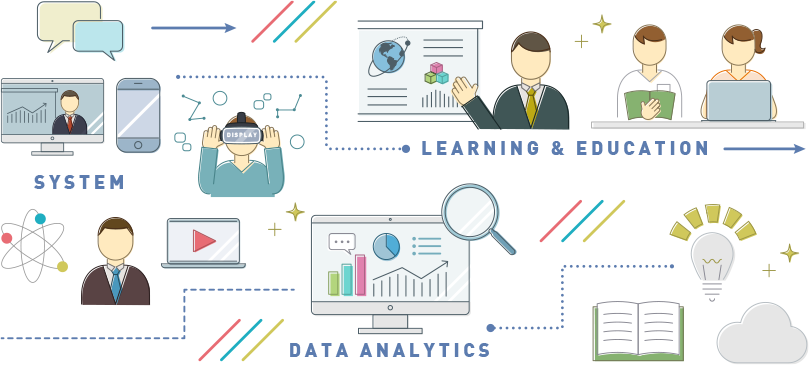Hello everyone, I’m Xuewang Geng. In this article, I will share the content and my thoughts on the paper we discussed in our recent English literature seminar.
Title: Lag Sequential Analysis for Identifying Blended Learners’ Sequential Patterns of e-Book Note-taking for Self-Regulated Learning
Journal: Educational Technology & Society
Volume and page: 26 (2), pages 63-75.
Published year: 2023
Authors: Christopher C.Y. Yang and Hiroaki Ogata
URL: https://www.jstor.org/stable/48720996
Here is the overview of the paper’s contents.
In recent years, with the advancement of information and communication technologies, blended learning has gained attention in the field of education. In blended learning environments, the use of E-book systems has become widespread. By utilizing E-book systems, a variety of learning resources can be integrated into face-to-face classroom activities, allowing learners to interact directly with the materials, take quizzes, and engage in note-taking activities. Therefore, in blended learning environments, self-regulated learning is extremely important, requiring learners to engage in goal setting, planning, implementing strategies, monitoring, and reflection. Note-taking is a crucial activity in E-book systems. By taking notes, learners can summarize the key points of the material and deepen their understanding in their own words. Additionally, reviewing notes allows them to reinforce and solidify the learning content in their memory. Furthermore, reviewing notes allows learners to repeat and embed the content in their memory. It is also noted that blended learning may involve different learning behaviors and strategies compared to traditional face-to-face learning. Therefore, this study focuses on the behavioral patterns of note-taking using E-book systems in blended learning environments and aims to identify if there are differences in note-taking behaviors among students with varying learning outcomes.
Regarding the research methods, a study was conducted over six weeks involving 88 undergraduate students majoring in Management Information Systems. The E-book system used was the BookRoll system, which features functionalities such as page turning, marking, note-taking, and page jumping. Participants utilized the BookRoll system to study learning materials during both in-class face-to-face sessions and self-study sessions outside of class. After six weeks, a final exam was conducted to measure the learning outcomes. Based on the percentile ranks of the exam scores, all learners were classified into high and low groups. To analyze learning behaviors, data on the use of the BookRoll system was extracted from the database and preprocessed. Furthermore, the collected data on participants’ learning behaviors was coded, and lag sequential analysis was performed to identify the note-taking behavioral patterns among all participants and between the groups with high and low learning outcomes.
The analysis of the learning behavior data revealed the frequency and patterns of students’ note-taking behaviors. It was found that actions such as turning pages, adding notes, and marking text were the most frequently performed. In addition to the circular learning behavior patterns of moving forward and backward through pages, strategies related to note-taking and review were also observed, such as modifying notes after adding them, adding notes after deleting a marker, and deleting notes after adding a marker. Significant differences in note-taking behavioral patterns were observed between the high and low achievement groups. The high group exhibited more frequent use of cognitive strategies such as “adding notes” and “adding markers,” suggesting that a deeper processing approach is linked to higher learning outcomes. Conversely, the low group showed a higher proportion of “page turning” activities, with fewer actions related to note-taking. These results demonstrate that note-taking and note review can impact learning outcomes, highlighting the importance of note-taking in blended learning environments. Additionally, how students engage with the E-book system through note-taking can influence their learning outcomes. Therefore, this study provides important insights into the note-taking behaviors of learners using E-book systems, and it is expected that the findings will inform the design of more effective blended learning environments.
Here are my thoughts on this paper.
As blended learning continues to evolve, I became interested in the impact of utilizing E-book systems on self-regulated learning behaviors. Additionally, the similarities to my previous research on the BookRoll system (Geng et al., 2024) led me to select and read this paper. This study, particularly focusing on note-taking behaviors within E-book systems, provided many new insights. The research approach, which concentrated specifically on note-taking activities rather than all learning data, was very enlightening. It has broadened my perspective on how to analyze the diverse learning data collected from E-book systems. However, I felt that there was a slight lack in the discussion regarding the interpretation of the research results. For instance, the study shows that the frequency of adding notes and moving to the next page are generally equally high, but it does not clearly specify what the instructional design entails. Delving deeper into how the face-to-face component of blended learning impacts note-taking behaviors in E-book systems might yield even more intriguing insights. Additionally, while effective note-taking behavior patterns in the high achievement group were discussed, I believe a more detailed examination of the specific characteristics of note-taking behaviors in the low achievement group would be beneficial. This could become an important focus point for future research.
By: Xuewang Geng







